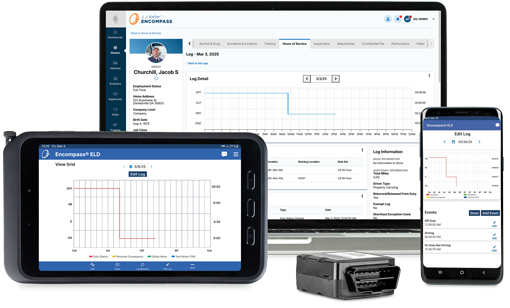Industry Business Advisor — J. J. Keller & Associates, Inc.
The ELD Mandate and Supporting Documents
The new FMCSA supporting document provision became effective December 18, 2017, and the changes are significant.
Published On: 08/28/2017


Written by:
Rick Malchow
When the FMCSA published the ELD final rule, they added a new section, §395.11, that outlined the collection, use, and retention of supporting documents. A supporting document is defined in the final rule as “a document, in any medium, generated or received by a motor carrier in the normal course of business as described in §395.11 that can be used, as produced or with additional identifying information, by the motor carrier and enforcement officials to verify the accuracy of a driver’s record of duty status.”
The new supporting document provisions have an effective date of December 18, 2017, same as the ELD mandate. The changes are significant (the term “supporting document” is used 266 times in the final rule) and carriers should use the time available to prepare by reviewing current policies and procedures and begin adapting them to meet the revised requirements.
Supporting Document Requirements
5 Record Types
The agency broke the documents into a list of five record types in the final rule:
- Bills of lading, itineraries, schedules, or equivalent documents that indicate the origin and destination of each trip
- Dispatch records, trip records, or equivalent documents
- Expense receipts
- Electronic mobile communication records, reflecting communications transmitted through a fleet management system (FMS) (the complete record is counted as one document)
- Payroll records, settlement sheets, or equivalent documents that indicates payment to a driver
While the FMCSA asserted that the final rule “neither increases nor decreases the burden associated with supporting documents,” many believe that the FMCSA made the supporting document provisions more complicated with the Electronic Logging Device (ELD) final rule. Why? As stated earlier, ELDs will be used to validate drive time. So, the supporting documents that the carrier must retain will be used primarily to verify that the driver is logging on-duty time correctly (not logging it as off-duty time). Supporting documents will also be used to investigate certain questionable driver activities, such as examining questionable edits, trying to determine the driver in an unassigned driving situation, or when the driver “disappears” and reappears” in a different location. Violations will be found by comparing the supporting documents to the drivers’ logs.
Supporting Documents and ELD Provider Considerations
Fleets need to consider how they will change their internal processes to meet the supporting document requirement in the mandate. Based on their specific type of operation, they need to identify what supporting documents they have, who will conduct the internal audit and which drivers will be audited.
On top of that, the FMCSA reminded carriers that “The rule retains the requirement that supporting documents be retained in a manner that allows them to be effectively matched to the driver’s RODS.” The requirements of §395.11(e) mandates that the carrier is responsible for having a process in place for locating and presenting supporting documents when they are requested. The normal audit process involves the investigator asking for logs and supporting documents for specific drivers for specific dates. This means that your supporting document process will need to be structured such that you can:
- Identify which documents are supporting documents,
- Store the identified documents in such a way that they can be cross referenced by driver and date, and
- Locate and present all supporting documents for a specific date for a certain driver when requested.
To meet these prerequisites, a carrier either needs a very complex paper filing system, or an electronic filing system that can easily perform data look-ups as well as reverse data look-ups. The takeaway? If you haven’t selected an ELog provider yet, be sure to make “compliance with the supporting documents provision within the mandate” part of your discussion.
Here’s a summary of the Supporting Document requirements:
- Motor carriers must retain up to 8 supporting documents for every 24-hour period a driver is on duty,
- Carriers must retain driver logs and supporting documents for 6 months,
- Drivers must submit supporting documents to the motor carrier no later than 13 days after receiving them. The documents should contain the following elements:
- Driver name or driver number, either on the document or on another document enabling the carrier to link the document to the driver, or the vehicle unit number if that number can be linked to the driver,
- Date, Location (including name of nearest city, town, or village), and
- Time. NOTE: If a driver has fewer than 8 documents that include the 4 elements, a document that contains all of the elements except “time” is considered a supporting document; otherwise, it is not.
- If a driver submits more than 8 documents, the motor carrier must include the first and last documents for that day,
- If a driver submits fewer than 8 documents, the motor carrier must keep each document,
- If a driver records duty status on paper logs, all toll receipts are also supporting documents (not counted in the up-to-8 required),
- Upon request during a roadside inspection, a driver must make available to an authorized federal, state, or local official for the official’s review any supporting document in the driver’s possession,
- The carrier must retain supporting documents in a manner that they can be effectively matched to the corresponding driver’s record of duty status.
You may also enjoy the following articles:
Sign up for our newsletter!
We'll help you stay on top of regulations, best practices, and fleet industry news. Sign up to receive a monthly email notification with links to our most recent blog articles, free resources, and event invites.
